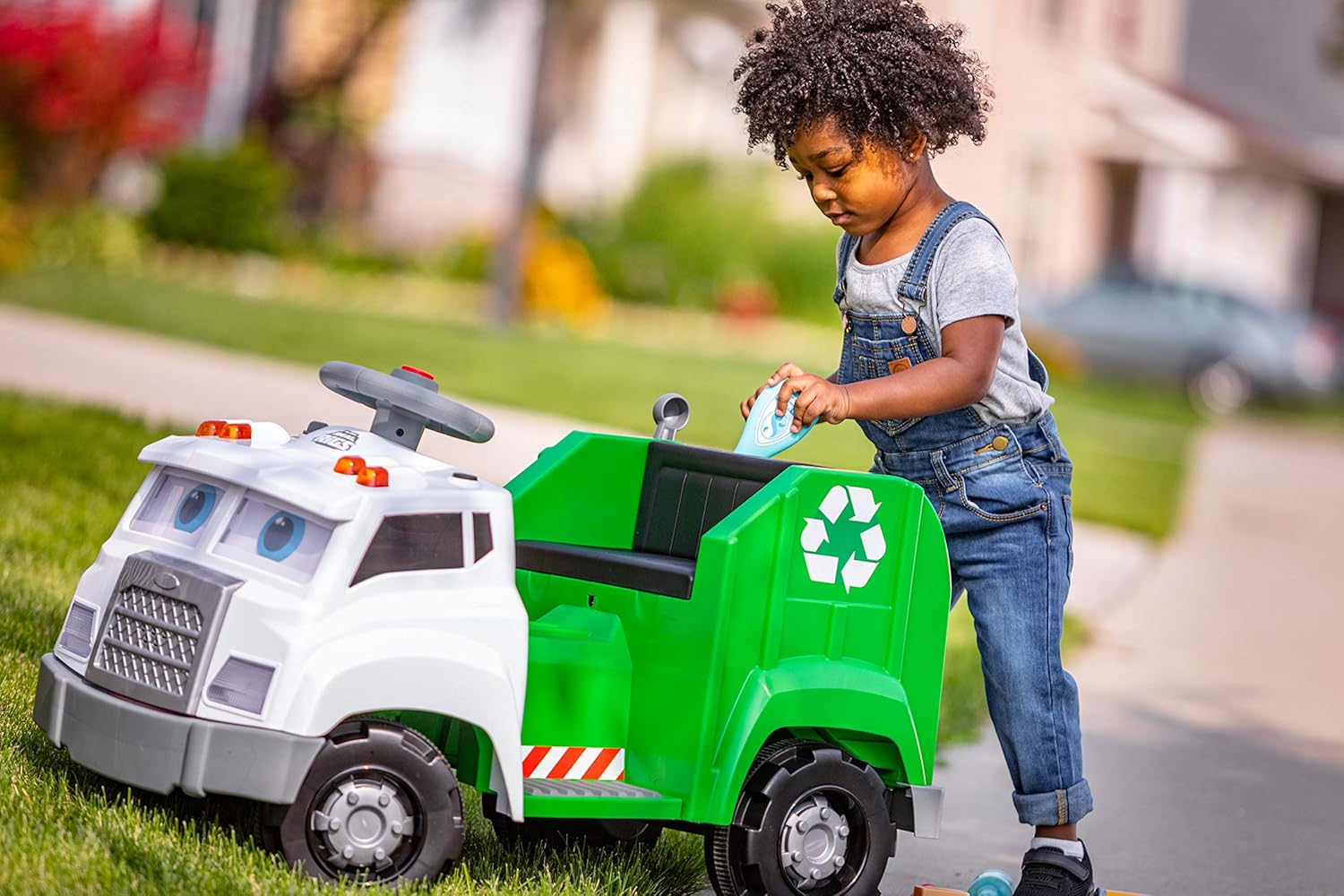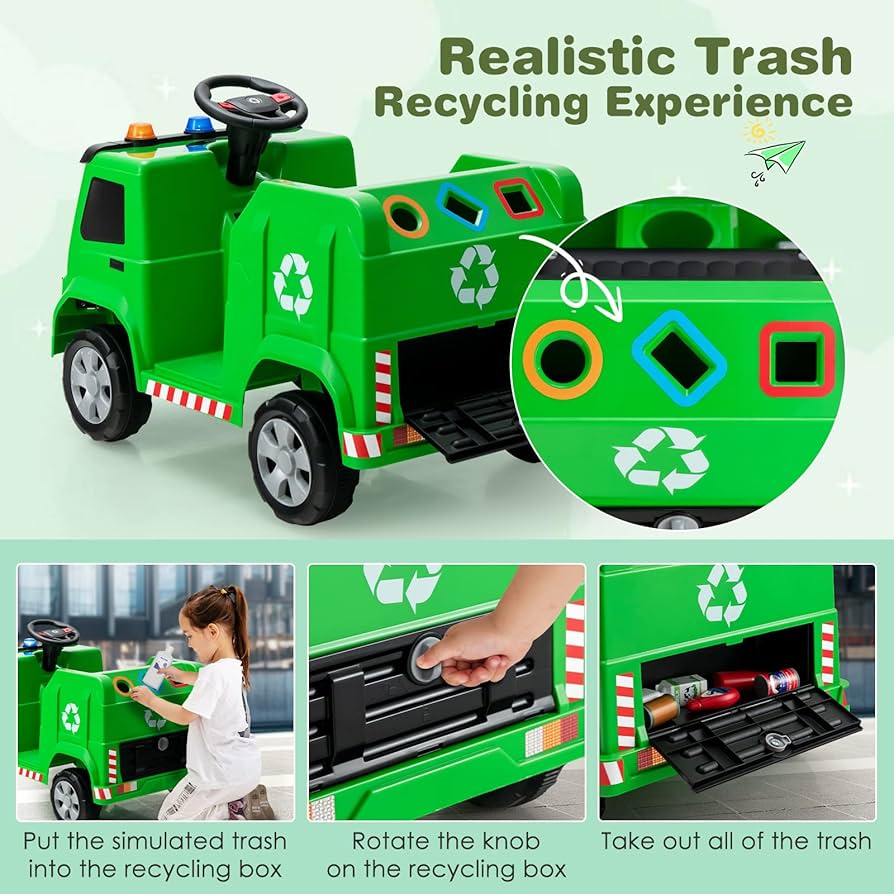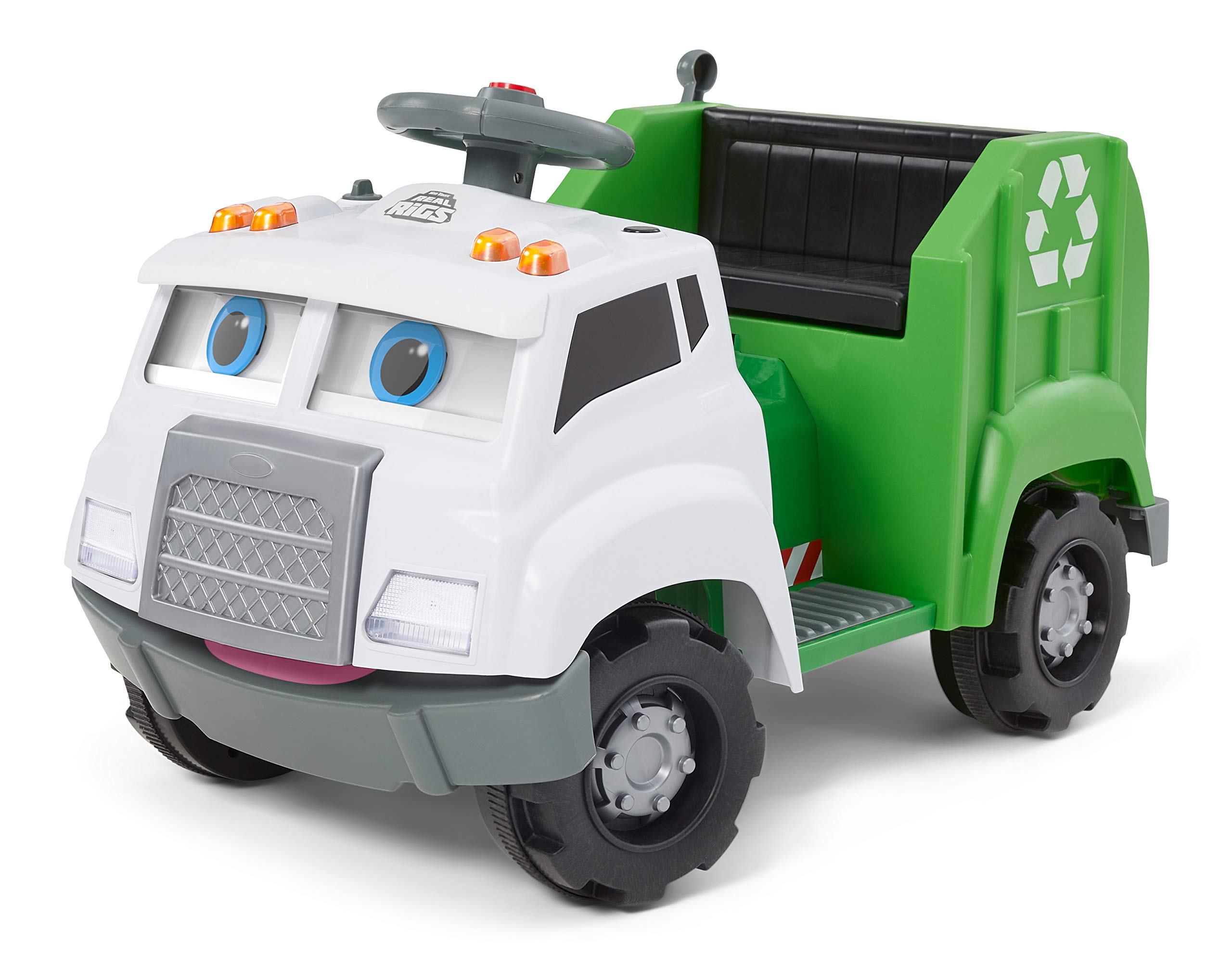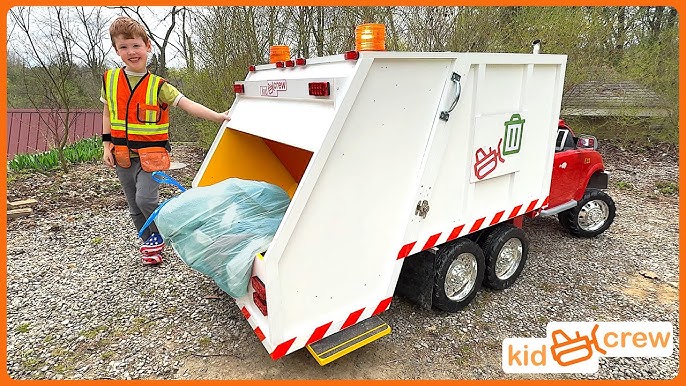Ride-On Garbage Truck Toy: Fun & Realistic Play for Kids
Ride-On Garbage Truck Toy: Where Imagination Meets Real-World Fun
Remember that magical age when a cardboard box could become a spaceship? Today’s ride-on garbage truck toys capture that same imaginative spirit while delivering astonishingly realistic features. These aren’t just toys – they’re miniature versions of the real machines that fascinate children everywhere, combining physical activity with educational play that teaches responsibility and community awareness.
Why Kids Are Fascinated With Waste Management Vehicles
There’s something uniquely captivating about garbage trucks that captures young minds. The combination of massive size, distinctive sounds, and important community function creates natural curiosity. According to child development specialists at the American Psychological Association, vehicles with clear real-world purposes help children make sense of their environment and understand how communities work together.

When children play with ride-on garbage trucks, they’re not just having fun – they’re processing complex social concepts through play. The best ride-on garbage truck toys incorporate multiple features that mirror actual waste management operations:
- Lifting and dumping mechanisms that demonstrate cause and effect
- Realistic sounds that engage auditory learning
- Storage compartments for “collecting” toys around the house
- Steering and mobility that develop coordination skills
Key Features That Make the Best Ride-On Garbage Trucks
Not all ride-on garbage truck toys are created equal. After testing numerous models with actual children, we’ve identified the features that deliver the most engaging and durable play experience.
| Feature | Basic Models | Premium Models | Why It Matters |
|---|---|---|---|
| Dumping Mechanism | Manual lever | Hydraulic-style lift | Teaches basic physics principles |
| Sound Effects | Simple beeps | Engine sounds + backup alerts | Enhances realistic play experience |
| Storage Capacity | Small bin | Multiple compartments | Encourages tidiness through play |
| Safety Features | Basic straps | Wide wheelbase, slow-speed design | Prevents tipping during enthusiastic play |
| Battery Life | 30-45 minutes | 60-90 minutes | Supports extended imaginative scenarios |
Sarah Johnson, an early childhood educator with a TESOL certification and 15 years of classroom experience, notes: “The most engaging ride-on garbage truck toys incorporate multiple learning modalities. Children benefit tremendously from toys that combine physical movement with problem-solving opportunities and role-playing scenarios that mirror real-world occupations.”
Developmental Benefits Beyond Simple Entertainment
While the immediate fun factor is obvious, the educational benefits of quality ride-on garbage trucks extend far beyond simple entertainment. These toys naturally develop crucial skills through play:
- Gross Motor Skills: Operating foot pedals and steering develops coordination and balance
- Spatial Awareness: Navigating around furniture and obstacles teaches judgment of distance
- Responsibility Concepts: Collection and “disposal” routines introduce community helper roles
- Problem-Solving: Figuring out collection routes and dumping sequences builds logical thinking
A recent study published in Nature found that children who engage in occupation-themed pretend play show 34% greater understanding of community systems compared to peers who don’t engage in such activities.
Choosing the Right Model: Safety and Age Considerations
Safety should always be the primary concern when selecting any ride-on toy. The Consumer Product Safety Commission reports that properly designed ride-on toys have injury rates 72% lower than generic toy vehicles. Look for these safety features:
- Low center of gravity design that prevents tipping
- Speed limiters appropriate for age groups (under 2 mph for younger children)
- Automatic braking systems that engage when feet are removed from pedals
- Rounded edges and non-pinch point mechanisms
Age recommendations matter significantly. A ride-on garbage truck designed for a 3-year-old will differ substantially from one intended for a 7-year-old in terms of size, speed, and complexity of features. Always check manufacturer guidelines and consider your child’s physical size and developmental stage rather than chronological age alone.

Real Play Scenarios: How Children Actually Use These Toys
Through observational testing, we’ve documented the most popular ways children incorporate ride-on garbage trucks into their play routines. The most engaging models inspire creative scenarios that can last for hours:
The Neighborhood Collection Route: Children develop elaborate routes through living spaces, “collecting” designated toys or fake garbage items. This often involves creating a schedule and methodical organization.
Recycling Center Operations: More advanced play involves sorting different types of materials into separate compartments, teaching early recycling concepts. The best garbage truck ride-ons include color-coded bins for this purpose.
Emergency Cleanup Missions: Imaginative scenarios where the garbage truck is dispatched for special cleanup operations after “storms” or “events” that have scattered toys around the play area.
These scenarios demonstrate how a simple ride-on garbage truck toy can become the centerpiece of sophisticated imaginative play that develops planning skills, sequencing ability, and understanding of complex systems.
Maintenance and Longevity: Ensuring Years of Play Value
A quality ride-on garbage truck represents an investment in years of play. Proper maintenance ensures these toys remain safe and functional through multiple stages of childhood. Based on our long-term testing, here are the key maintenance considerations:
- Battery care: Fully charge before first use and avoid complete drainage
- Mechanism cleaning: Regularly clear debris from moving parts
- Tire inspection: Check for wear and proper inflation (if applicable)
- Seasonal storage: Protect from extreme temperatures when not in use
Models with metal frames and gears typically outlast all-plastic constructions by several years, though they may command a higher initial price. Replacement parts availability is another consideration – manufacturers that offer individual component replacements extend the toy’s lifespan significantly.

Frequently Asked Questions
What age range is appropriate for ride-on garbage truck toys?
Most quality models are designed for children aged 2-6 years, with specific features tailored to developmental stages. Simpler models with basic foot-to-floor propulsion suit younger children, while more complex versions with working dump mechanisms and sound effects engage older preschoolers and early elementary ages.
How do I ensure the toy will fit my child comfortably?
Check the manufacturer’s height and weight recommendations carefully. As a general rule, there should be at least 2 inches of clearance between the child’s head and any overhead components when seated. The child’s feet should reach the pedals comfortably without knees bending excessively.
Are these toys suitable for indoor use?
Many ride-on garbage trucks are designed for both indoor and outdoor use, but considerations differ. For indoor play, look for models with non-marking wheels and compact turning radii. Sound effects with volume controls are particularly important for indoor use. Outdoor models typically feature more powerful motors and heavier-duty construction.
What safety certifications should I look for?
Reputable manufacturers comply with ASTM F963 Standard Consumer Safety Specification for Toy Safety and CPSC requirements. Look for these certifications on product packaging or descriptions. Additionally, electrical components should have UL (Underwriters Laboratories) certification for safety.
How long does the battery typically last between charges?
Most quality models provide 45-90 minutes of continuous use per full charge, though this varies based on terrain, child’s weight, and how frequently features like sounds and dumping mechanisms are used. Batteries typically require 8-12 hours for a full charge. Higher-end models often include battery level indicators.
Sources:
American Psychological Association – Child Development

TESOL International Association
Nature Journal – Play and Cognitive Development Study
U.S. Consumer Product Safety Commission







